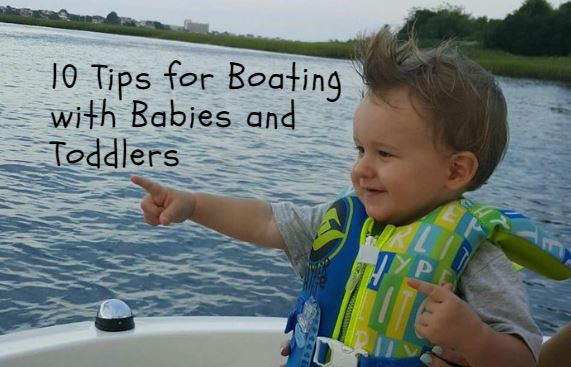
Are you ready to handle a boat while also handling a baby? We’ll tell you all you need to know to keep your little one safe and happy while on-board. By Kim Koditek, Boats.com.
With a 13-month old baby in her one arm and the steering wheel in the other, I watched as a new mom, Whitney, guided the 18-foot Bayliner Element XL out of the slip. Her co-captain, Tiffany, untied the lines, pushed us off the dock, then quickly hopped onboard and settled into a seat. Whitney passed off Brent, or “Baby B” as everyone calls him, as we slowly made our way out of the no wake zone.
Thinking back now, this was a situation where I probably should have volunteered to lend a hand—but to be honest, I was too busy admiring them. I knew the boat was almost as new as their baby; how were they handling both of them so well so quickly? I know from personal experience that handling a boat can sometimes be quite a challenge; factor in caring for an infant on top of that, and I am in awe. I would continue to be in awe for the rest of the afternoon as Baby B and his parents showed me just how easy and fun it can actually be to go boating with a very young child.
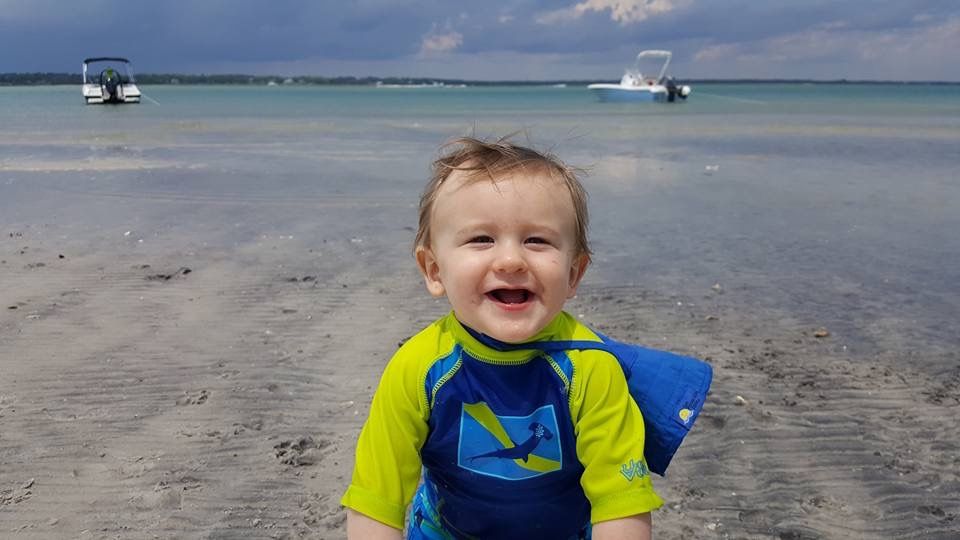
If you love boating on your favorite lake, then you probably love getting the chance to experience it with the people closest to you—whether that’s your significant other, friend, or even the newest member of your family. Boating with a baby comes with its challenges, but the rewards are well worth it; just look at that smile.
To help you experience this for yourself, here are our top ten tips for safe, stress-free boating with your baby:
1. Make sure your infant has a proper lifejacket. With safety in mind, it’s important to note that the U.S. Coast Guard (USCG) requires lifejackets to be worn when your boat is underway. So just like every other person on the boat, your baby must have their own personal lifejacket (sometimes referred to as personal flotation device, or PFD). Because the USCG recommends that an infant should be at least 18 pounds in order to have their lifejacket fit properly, you should wait until they hit that point before bringing them on the water. You’ll also notice that all infant lifejackets have an additional head cushion designed to provide extra protection and to keep the child’s head clear of the water. Visit USCG Boating for help with sizing and selection of PFDs, and don’t forget to check your own individual state’s rules and regulations concerning children’s PFDs.
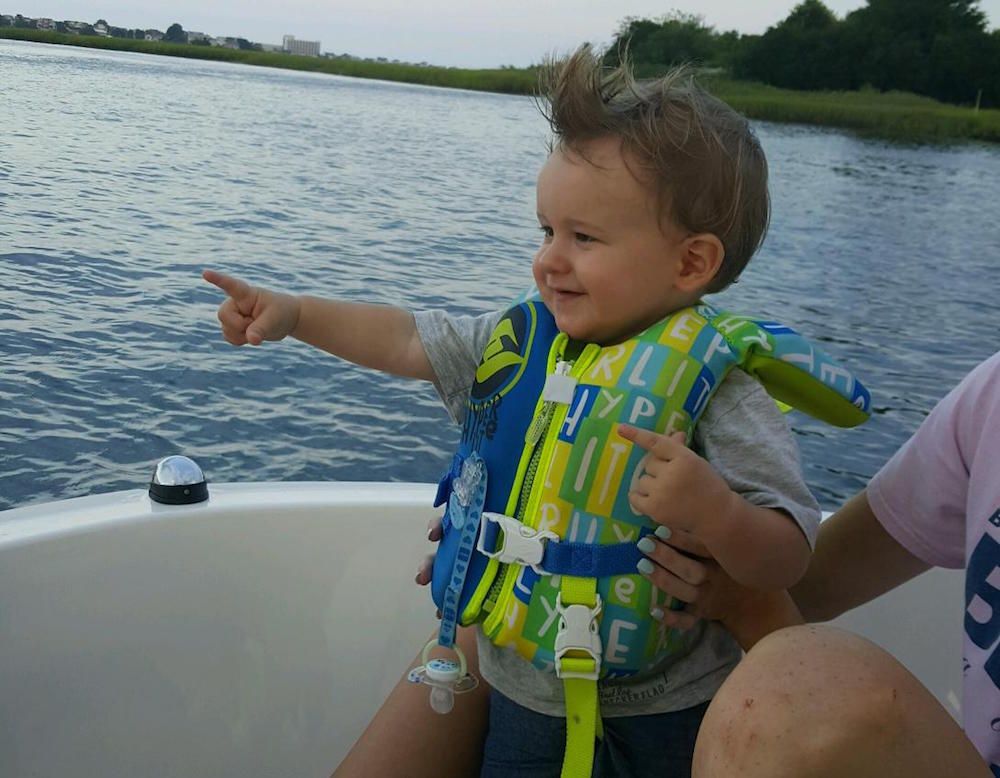
Infant lifejackets are one of the most important pieces of equipment to consider when boating with a baby. The U.S. Coast Guard provides helpful guidelines for selection and sizing.
2. Designate a secure, protected area on your boat. Often when you’re out on the water, you need all hands on deck—whether it’s when you’re docking, dropping anchor, or even in the rare case of an emergency. In these situations and in cases where you only have one or two additional people onboard, it might not be possible to have one person holding and caring for the small child while the other(s) perform the necessary actions for the circumstances. By designating a safe area on your boat where you can seat the baby without the risk of them falling or moving around, you’ll reduce your own stress and have a solution in place before this type of situation arises.
3. Get ready for naptime. You should always bring a portable rocker or pack-n-play with you. This will assist with creating that safe area on your boat and will also give you a great place to put down your baby whenever you need to be hands-free. And as soon as naptime rolls around, you’ll be very happy that you brought it.

While anchored along shore, Brent and his family cool off in the shade of their boat’s bimini top.
4. Create some shade. The last thing you want is for your little one to feel overheated or sick when you’re miles away from the dock—by supplying some shade, you can easily prevent that. A bimini top usually works well to block the sun and keep a large portion of your boat cool. It’s also not a bad idea to bring along a sun hat and an extra beach umbrella to give your baby another layer of protection, especially for use off the boat when the bimini top can’t provide coverage. And of course, don’t forget to bring plenty of sunscreen—but we’ll touch more on that later.
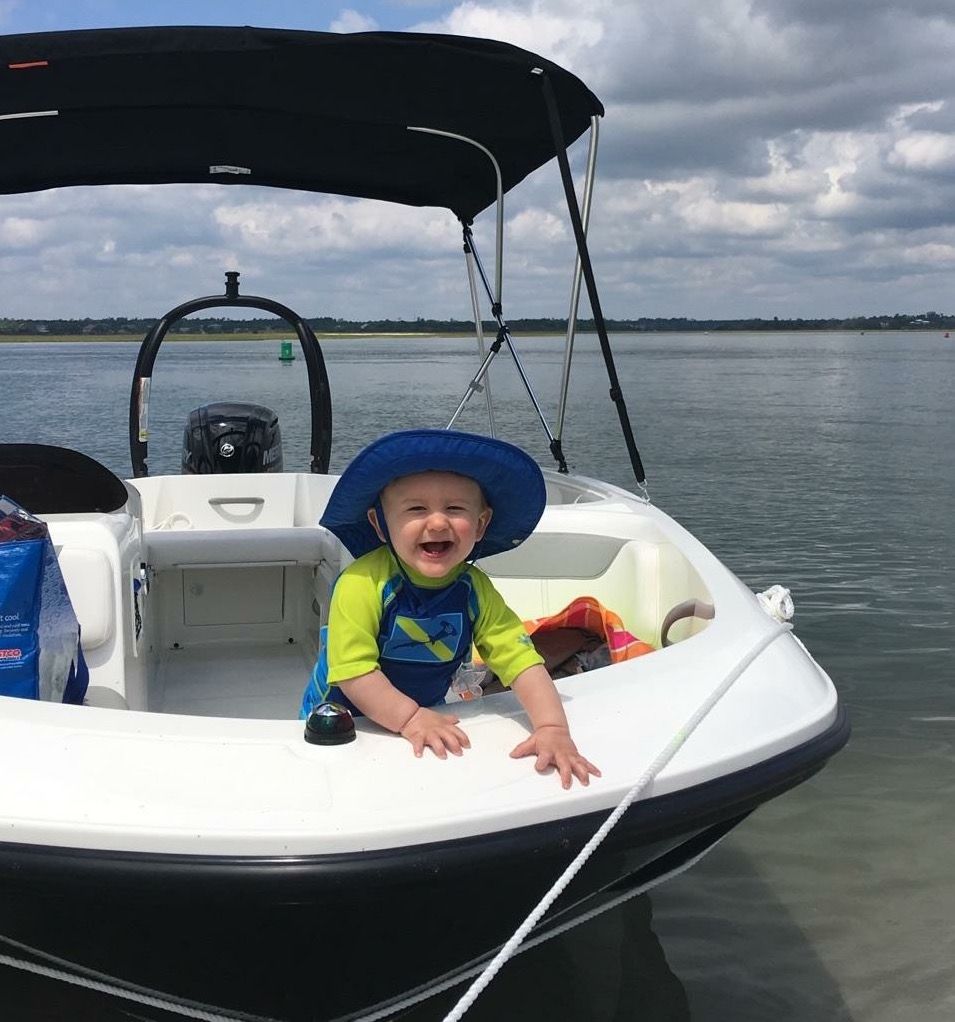
Baby B loves rocking his sun hat, as should any baby who’s out for a day on the water. Sun hats and even baby sunglasses are great options for providing a little extra sun protection.
5. Choose your boating hours accordingly (and be cautious of bad weather). Just like rush hour traffic on an interstate, all waterways have primetime boating hours. Generally, most boaters will head out around mid to late morning and then stay out until late afternoon or early evening. To avoid the rush, it’s a smart idea to either start your day as early as possible, or wait until most boaters have made their way back to their docks later in the afternoon. Not only will this cut down on boat traffic, but early mornings and evenings tend to provide cooler temperatures and smoother waters—both of which are ideal conditions when boating with an infant.
It’s also important to be conscious of the weather. Check the radar before heading out, and if it looks excessively windy or there’s a chance of thunderstorms, consider shortening your trip or rescheduling for another day.
6. Pack plenty of supplies. Make sure your diaper bag is waterproof and stock up on the essentials: food, water, baby formula, juice, snacks, pacifiers, waterproof diapers (also known as swimmers), sunscreen and whatever else you think you might need for the day. It’s a good rule of thumb to pack more than you think you’ll need—it’s better to be safe than sorry.

Wait, is that Brent or Whitney driving the boat? The best seat for any baby is right on someone’s lap, whether that’s cruising behind the wheel with the driver or riding alongside with a passenger.
7. Remember that the safest seat for your baby is in your arms. Boats, not being cars, don’t have car seats, which can sometimes raise the question: where should my little one sit while the boat is in motion? The answer is: right on your lap. Keeping the child in your arms when cruising assures that they will not fall or injure themselves on any part of the boat. Don’t forget that your baby should always wear his or her infant lifejacket at all times while the boat is moving.
8. Plan for fun in the water. When it’s time to drop anchor or pull up on a sandbar, that’s when the fun really starts. You’ll love seeing your baby’s eyes light up as they splash around in the water or crawl around in the sand. Don’t forget to bring along a small float that you can tie to the boat to keep it in place. Sand and bath toys are also good options to help your toddler have fun in the sun.
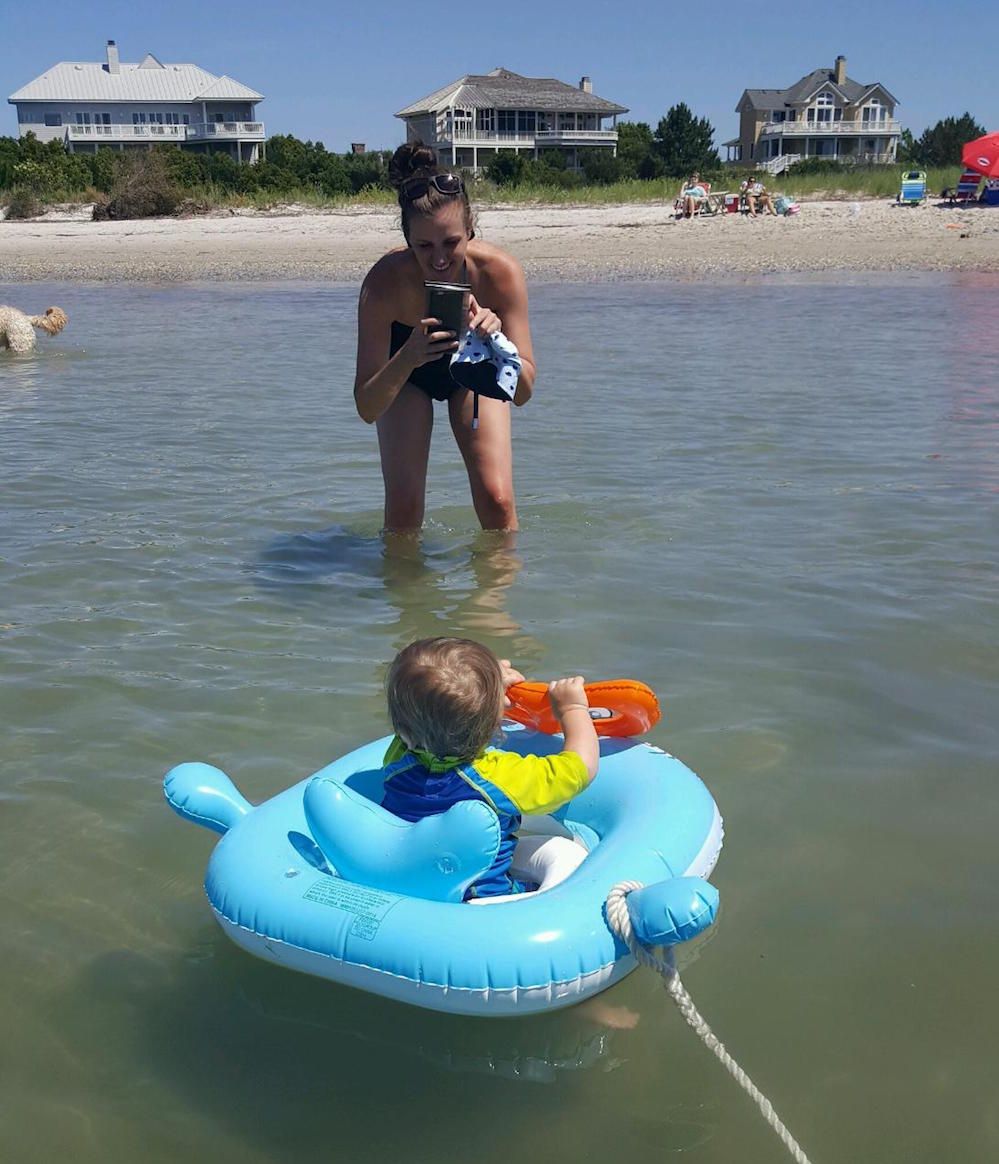
While the boat is anchored along the shore, Brent takes a ride in his inflatable raft. Baby floats and rafts, tied to the boat, are a great way to allow your little one to drift around in the water.
9. Plan for fun on the boat. To keep your little one happy and occupied while onboard, bring along plenty of their favorite toys from home. Just one suggestion: even though they’ll be playing with these toys while onboard the boat, it’s a good idea to stick to the waterproof toys. Nobody likes a soggy teddy bear.
10. Recruit an army of ready and willing babysitters. Every parent needs some backup every once in a while, so be sure to invite plenty of friends and family members out with you. These volunteer babysitters will usually be more than willing to take the little cutie off your hands with little to no persuasion. Not only will this make handling the boat easier, but it might also give you some extra time to relax.

This crew was more than happy to lend a hand with Baby B during their day out on the water. Friends and family really do make the best babysitters.
Although boating with a infant can be difficult at first, it won’t take long to create a routine that will make the whole experience easier. Consider taking shorter trips until you’ve gotten more confident and comfortable boating with your baby. Before you know it, they’ll love boating just as much as you do. As your child gets older, it might be helpful to check out our video on 10 Tips for Boating with Kids. We’ll leave you with one final tip: bring a camera!
Reposted by Scott Freerksen “The Lake Guy”
